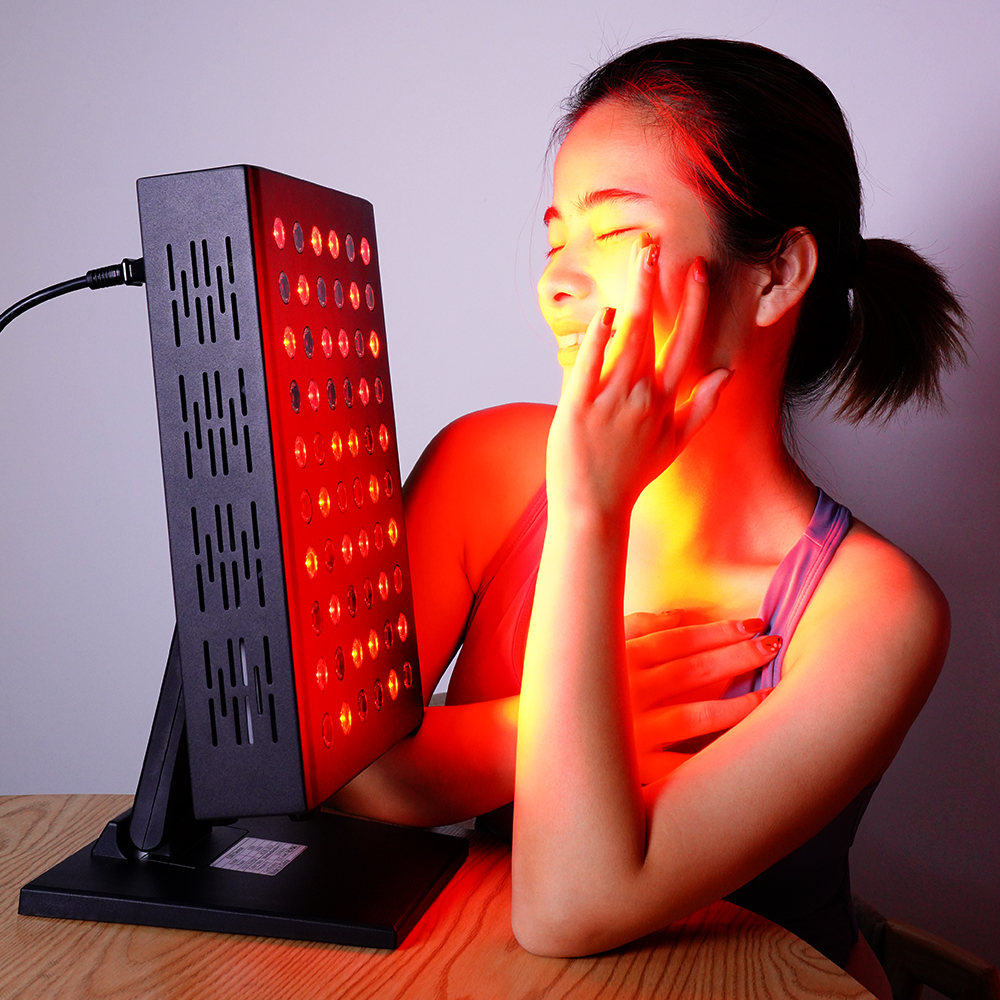Email format error
Email cannot be empty
Email already exists
6-20 characters(letters plus numbers only)
The password is inconsistent
Email format error
Email cannot be empty
Email does not exist
6-20 characters(letters plus numbers only)
The password is inconsistent


In the realm of wellness and alternative therapies, red light therapy and infrared saunas are gaining popularity for their purported health benefits. Both modalities involve light therapy but differ significantly in their applications, mechanisms, and benefits. This comprehensive guide will explore the difference between red light therapy and infrared sauna, helping you understand which might be best suited for your health needs.
What is Red Light Therapy?
Red light therapy, also known as low-level laser therapy (LLLT) or photobiomodulation, uses red low-level wavelengths of light to treat various skin issues, reduce inflammation, and promote healing. This therapy typically employs wavelengths ranging from 630 to 660 nanometers.
How Red Light Therapy Works
Red light therapy works by penetrating the skin to a depth of about 8 to 10 millimeters. The light energy is absorbed by the mitochondria in cells, which increases the production of adenosine triphosphate (ATP). ATP is a vital energy-carrying molecule that powers various cellular functions, leading to enhanced cell repair and regeneration.
Benefits of Red Light Therapy
- Skin Health: Promotes collagen production, reducing wrinkles and fine lines.
- Wound Healing: Accelerates the healing process of wounds and injuries.
- Pain Reduction: Alleviates pain and inflammation in muscles and joints.
- Mood Improvement: Potentially enhances mood by affecting serotonin levels.
Common Uses of Red Light Therapy
- Anti-Aging: Reduces signs of aging by improving skin elasticity and texture.
- Acne Treatment: Decreases inflammation and bacterial levels, reducing acne.
- Muscle Recovery: Speeds up recovery time for athletes and individuals with muscle injuries.
- Arthritis: Provides relief from symptoms of arthritis and joint pain.
What is an Infrared Sauna?
An infrared sauna uses infrared light to create heat, which is absorbed by the surface of the skin. Unlike traditional saunas that heat the air around you, infrared saunas use infrared panels to emit light that directly heats your body.
How Infrared Saunas Work
Infrared saunas emit infrared light in the form of thermal radiation, which penetrates the skin to heat the body directly. This method allows for a deeper sweat at a lower temperature compared to traditional saunas, typically ranging between 120°F to 150°F.
Benefits of Infrared Saunas
- Detoxification: Promotes sweating, which helps to detoxify the body by eliminating heavy metals and toxins.
- Weight Loss: Increases heart rate and metabolic rate, potentially aiding in weight loss.
- Improved Circulation: Enhances blood flow and improves cardiovascular health.
- Pain Relief: Eases muscle soreness, joint pain, and inflammation.
Common Uses of Infrared Saunas
- Relaxation: Provides a relaxing experience that helps reduce stress and anxiety.
- Post-Workout Recovery: Aids in the recovery process after intense physical activity.
- Skin Purification: Improves skin tone and clarity by promoting increased blood circulation and detoxification.
- Chronic Pain Management: Helps manage chronic pain conditions like fibromyalgia and arthritis.
Key Differences Between Red Light Therapy and Infrared Sauna
Understanding the difference between red light therapy and infrared sauna is crucial for making an informed decision about which therapy to use based on your health goals. Here are the primary distinctions:
Light Spectrum and Wavelengths
- Red Light Therapy: Uses visible red light and near-infrared light, typically between 630 to 660 nanometers and 800 to 880 nanometers.
- Infrared Sauna: Utilizes a broader spectrum of infrared light, including near, mid, and far-infrared wavelengths (700 to 1,000,000 nanometers).
Mechanism of Action
- Red Light Therapy: Focuses on cellular regeneration by boosting mitochondrial function and ATP production.
- Infrared Sauna: Heats the body directly through thermal radiation, leading to increased heart rate, sweating, and detoxification.
Treatment Goals
- Red Light Therapy: Primarily aimed at skin rejuvenation, wound healing, pain relief, and reducing inflammation.
- Infrared Sauna: Focused on detoxification, relaxation, improved circulation, and weight loss.
Application and Usage
- Red Light Therapy: Typically involves short sessions (10-20 minutes) of exposure to red or near-infrared light on specific body parts.
- Infrared Sauna: Involves longer sessions (20-45 minutes) in an enclosed sauna cabin where the entire body is exposed to infrared heat.
Benefits and Effects
- Red Light Therapy: Benefits include enhanced skin health, faster muscle recovery, and reduced inflammation and pain.
- Infrared Sauna: Benefits include detoxification, improved cardiovascular health, stress reduction, and potential weight loss.
How to Choose Between Red Light Therapy and Infrared Sauna
Choosing between red light therapy and infrared sauna depends on your specific health needs and goals. Here are some considerations to help you decide:
Skin Health and Anti-Aging
If your primary goal is to improve skin health and reduce signs of aging, red light therapy may be more suitable. Its ability to stimulate collagen production and improve skin texture makes it ideal for anti-aging treatments.
Pain Relief and Inflammation
For targeted pain relief and reduction of inflammation, red light therapy can provide more localized treatment. Its ability to penetrate deep into tissues makes it effective for joint pain, muscle soreness, and chronic inflammatory conditions.
Detoxification and Relaxation
If you're looking for a therapy that promotes detoxification and relaxation, an infrared sauna is the better choice. The sweating induced by infrared heat helps to eliminate toxins from the body while providing a calming, spa-like experience.
Weight Loss and Cardiovascular Health
Infrared saunas can aid in weight loss and improve cardiovascular health by increasing heart rate and metabolic rate. If these are your primary goals, an infrared sauna may be more beneficial.
Overall Wellness and Multiple Benefits
If you seek a therapy that offers a combination of benefits, including relaxation, detoxification, and improved skin health, an infrared sauna provides a more comprehensive approach. However, combining both therapies can also be an effective strategy for overall wellness.
Combining Red Light Therapy and Infrared Sauna
For those looking to maximize health benefits, combining red light therapy and infrared sauna sessions can be a powerful approach. Here’s how you can integrate both therapies into your routine:
Sequential Use
You can use red light therapy before entering an infrared sauna. The red light therapy can prepare your skin and muscles, enhancing the overall effects of the infrared sauna session.
Alternating Sessions
Alternate between red light therapy and infrared sauna sessions on different days. This approach allows your body to reap the benefits of both therapies without overloading it.
Integrated Devices
Some modern wellness centers and home setups offer integrated devices that combine red light therapy and infrared sauna in a single unit. These devices can provide the benefits of both therapies simultaneously, offering a convenient and efficient solution.
Safety Considerations
Both red light therapy and infrared saunas are generally safe for most people, but it’s essential to follow safety guidelines to avoid any potential risks.
Red Light Therapy Safety
- Eye Protection: Use appropriate eye protection to avoid direct exposure to the eyes.
- Duration and Frequency: Follow recommended treatment durations and frequencies to prevent skin irritation or overexposure.
- Consultation: If you have any underlying health conditions or are pregnant, consult with a healthcare professional before starting red light therapy.
Infrared Sauna Safety
- Hydration: Drink plenty of water before and after sauna sessions to stay hydrated.
- Temperature Control: Start with lower temperatures and gradually increase to avoid overheating.
- Session Duration: Limit sessions to 20-45 minutes to prevent dehydration and heat exhaustion.
- Medical Conditions: People with cardiovascular conditions, pregnant women, and those with certain medical issues should consult a doctor before using an infrared sauna.
Frequently Asked Questions
- Can I Use Red Light Therapy and Infrared Sauna Together?
Yes, you can use both therapies together. They complement each other and can be integrated into your wellness routine for enhanced benefits. Just ensure you follow proper safety guidelines for each therapy.
- How Often Should I Use Red Light Therapy?
The frequency of red light therapy sessions depends on the condition being treated and the device used. Generally, 3-5 times per week is recommended for most applications. Always refer to the manufacturer’s guidelines.
- How Often Should I Use an Infrared Sauna?
Infrared sauna sessions can be done 2-3 times per week for general wellness. For specific health goals, such as detoxification or pain management, daily sessions may be beneficial. Consult with a healthcare provider for personalized recommendations.
- Are There Any Side Effects?
Both therapies are generally safe with minimal side effects. Red light therapy might cause mild redness or irritation, while infrared saunas might lead to dehydration if proper hydration is not maintained. Always follow safety guidelines to minimize risks.
- Which Therapy is Better for Weight Loss?
Infrared saunas may have a slight edge for weight loss due to the increased heart rate and metabolic rate induced by the heat. However, red light therapy can also support weight loss by improving cellular function and reducing inflammation.
Conclusion
Understanding the difference between red light therapy and infrared sauna can help you make an informed decision about which therapy aligns with your health goals. Red light therapy excels in skin health, pain relief, and targeted healing, while infrared saunas are superior for detoxification, relaxation, and overall wellness. By evaluating your specific needs and considering the benefits of each, you can choose the most appropriate therapy or even combine both for optimal health benefits. Always remember to follow safety guidelines and consult with healthcare professionals when needed to maximize the effectiveness and safety of these therapeutic modalities.